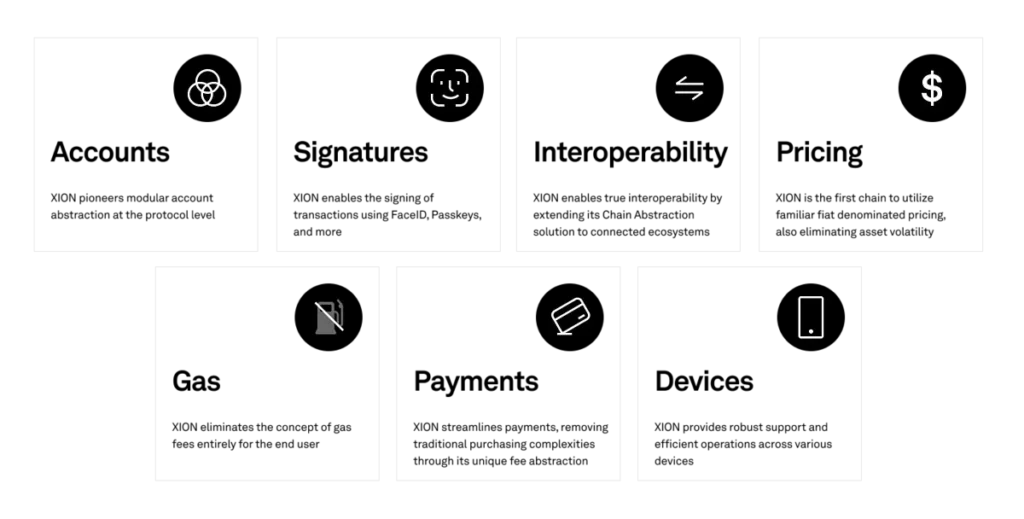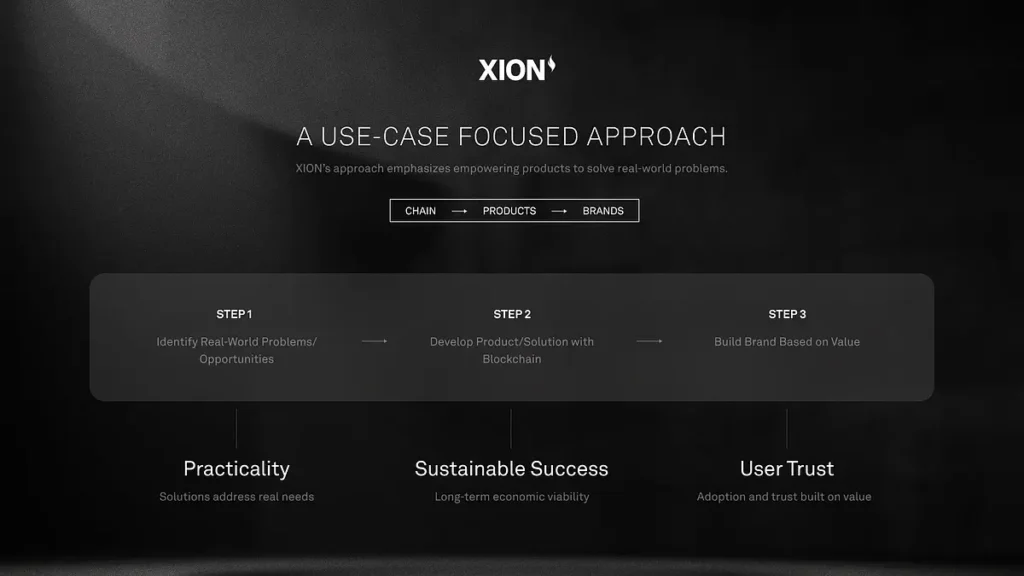XION is a Layer 1 blockchain designed to make Web3 easier for everyone to use. It removes the complicated parts of blockchain technology, like managing wallets, private keys, and gas fees. With XION, users don’t need to have deep technical knowledge to benefit from blockchain applications.
The goal of XION is simple: make Web3 as easy as today’s regular internet (Web2) while keeping the security, flexibility, and benefits of blockchain. By doing this, XION hopes to bring more people into the world of Web3, helping developers and users interact with blockchain technology easily.
Key Takeaways:
- User-Friendly Blockchain: XION makes it easy for developers to build Web3 applications that feel simple for non-experts.
- No Wallets Required: Users don’t need wallets, private keys, or gas fees to interact with blockchain apps built on XION.
- Interoperability: XION connects with multiple blockchain networks, making it easy to use different platforms through one account.
- Created by Burnt Banksy: The project is led by a famous figure known for burning a Banksy painting and selling it as an NFT.
- Rapid Growth: Since launching in 2024, XION has attracted over 3.6 million users and raised millions in funding.
Why Is XION Important?
Using traditional blockchains today can feel complicated. People must understand wallets, seed phrases, gas fees, and other confusing terms. Many users prefer sticking with regular Web2 applications because they feel easier to use.
However, blockchain technology offers huge benefits, like better security, ownership of digital assets, and new ways to build applications. For blockchains to become mainstream, they need to be as easy to use as Web2 applications, but without losing the unique benefits of decentralization. This is where XION comes in—it removes the friction of using Web3 so anyone can benefit from it without technical hassles.
What Makes XION Unique?
XION focuses on “Chain Abstraction,” which means it hides the technical parts of blockchain technology from users. With this approach, people won’t have to worry about setting up wallets, paying gas fees, or managing multiple cryptocurrencies. Developers also benefit by building smoother apps that are easier to launch and scale.
Let’s take a closer look at how XION makes blockchain simple:
1. No Wallets or Private Keys
Most blockchains require users to create a wallet, store private keys, and sign every transaction. If someone loses their private key, they lose access to their account forever. With XION, users can log in using simple methods like email or biometric authentication (like fingerprint or face recognition).
This makes it safer and easier for users to manage their accounts. They don’t need to worry about losing private keys or struggling with complicated wallet setups.
2. No Gas Fees for Users
Gas fees are payments made to blockchain networks for processing transactions. On most networks, users need to buy specific tokens to pay these fees, which can be confusing and inconvenient. XION solves this by using USDC (a stablecoin) for transactions.
This makes things much easier. Users only need USDC—they don’t need to buy or swap other tokens just to pay for transactions. Behind the scenes, XION automatically converts USDC into the gas fees needed to use different blockchains.
3. Works Across Different Blockchains
XION is built to connect with multiple blockchain networks, like Solana, Avalanche, and BNB Chain. This feature allows users to interact with all these networks from a single account without creating new wallets for each one.
For example, a person with a XION Meta Account can send assets from Solana to Avalanche without needing separate wallets or complicated swaps.
4. Payment Made Simple
XION allows users to make payments in any token or even with credit and debit cards. This makes the experience similar to buying things online, where people don’t need to understand complicated blockchain payment systems. Developers can now offer apps that feel familiar, just like Web2 platforms.
XION’s Rapid Growth and Ecosystem
XION’s public testnet launched in 2024 and has already attracted more than 3.6 million users and over 200 applications. These apps range from gaming to finance and social networks. XION aims to make sure that any app built on its blockchain is easy to use, even for people who are new to crypto.
Some well-known brands have already partnered with XION, including UberEats, Baskin Robbins, and The North Face. One example is EarnOS, a decentralized advertising platform built on XION. EarnOS has already attracted $12 million in ad spending and partnered with over 40 global brands.
Who Created XION?
XION was founded by Burnt Banksy, a well-known figure in the crypto world. His name became famous when he burned a painting by the artist Banksy and sold it as an NFT for $380,000—more than four times the painting’s original value.
After seeing how complicated blockchain systems were for everyday people, Burnt Banksy decided to create XION. His goal was to make digital ownership easy for everyone, ensuring that people could use blockchain apps without needing technical knowledge.
How Does the XION Token Work?
The XION token powers the network. It is used for:
- Staking: Users can lock their tokens to help secure the network and earn rewards.
- Voting: Token holders can propose and vote on changes to the network.
- Transaction Fees: Even though users interact with USDC, fees are converted to XION behind the scenes. This helps manage token supply and control inflation.

Solving Real-World Problems
XION is working to make blockchain accessible to everyone by solving common problems like complicated payments, fragmented ecosystems, and technical difficulties. It is also partnering with major blockchain networks, such as:
- Solana: XION allows users to access Solana’s network through their XION account, enabling cross-chain interactions.
- Avalanche: XION connects Avalanche’s multiple subnets, allowing users to move assets between networks easily.
- BNB Chain: Through a partnership with TOKI, XION integrates with the BNB chain, making cross-chain transactions simple.

These integrations make it easier for users and developers to switch between different blockchain networks and enjoy a seamless experience.
Conclusion: XION’s Future
XION hopes to become the go-to platform for mainstream blockchain adoption. Its goal is to make Web3 as easy to use as the apps we rely on today, without compromising the advantages of blockchain.
With its growing ecosystem and partnerships, XION is showing promising signs of success. However, as with all blockchain projects, it’s important to do your own research before getting involved.
By focusing on user experience, interoperability, and accessibility, XION is making Web3 easier and more inviting. It’s a step towards a future where everyone—not just tech experts—can enjoy the benefits of blockchain.
